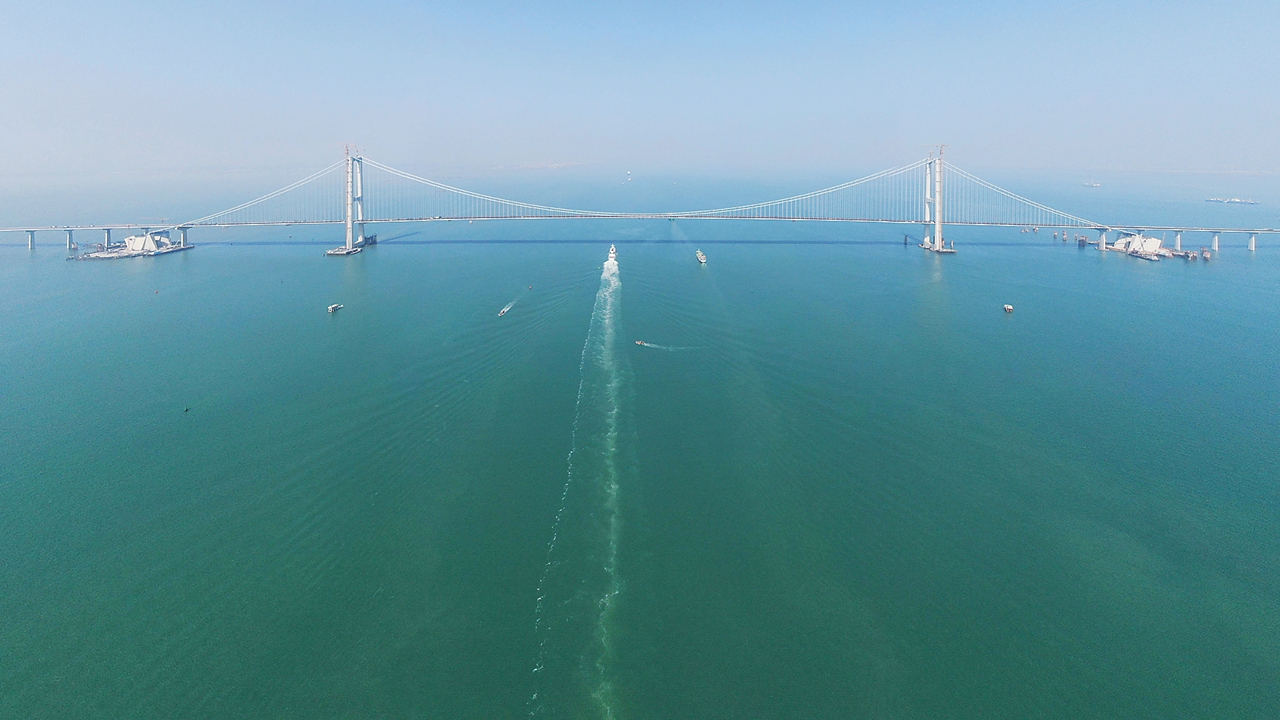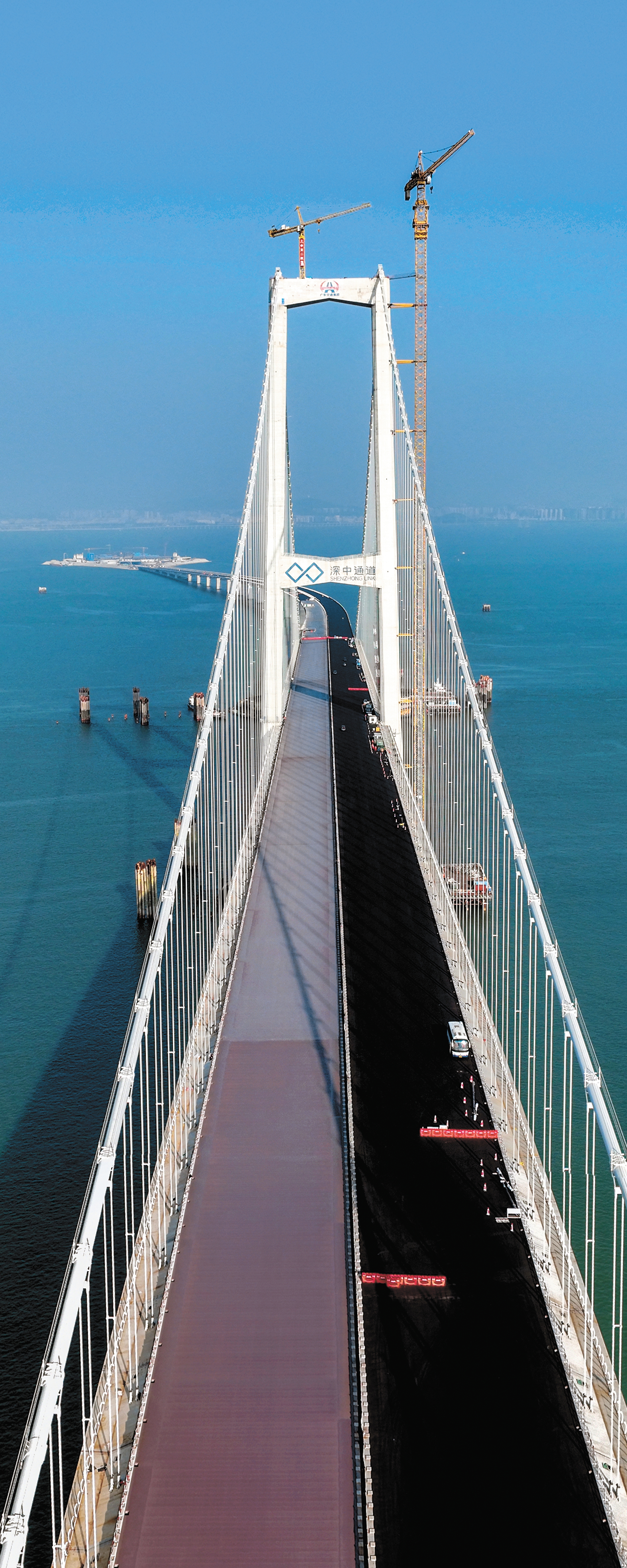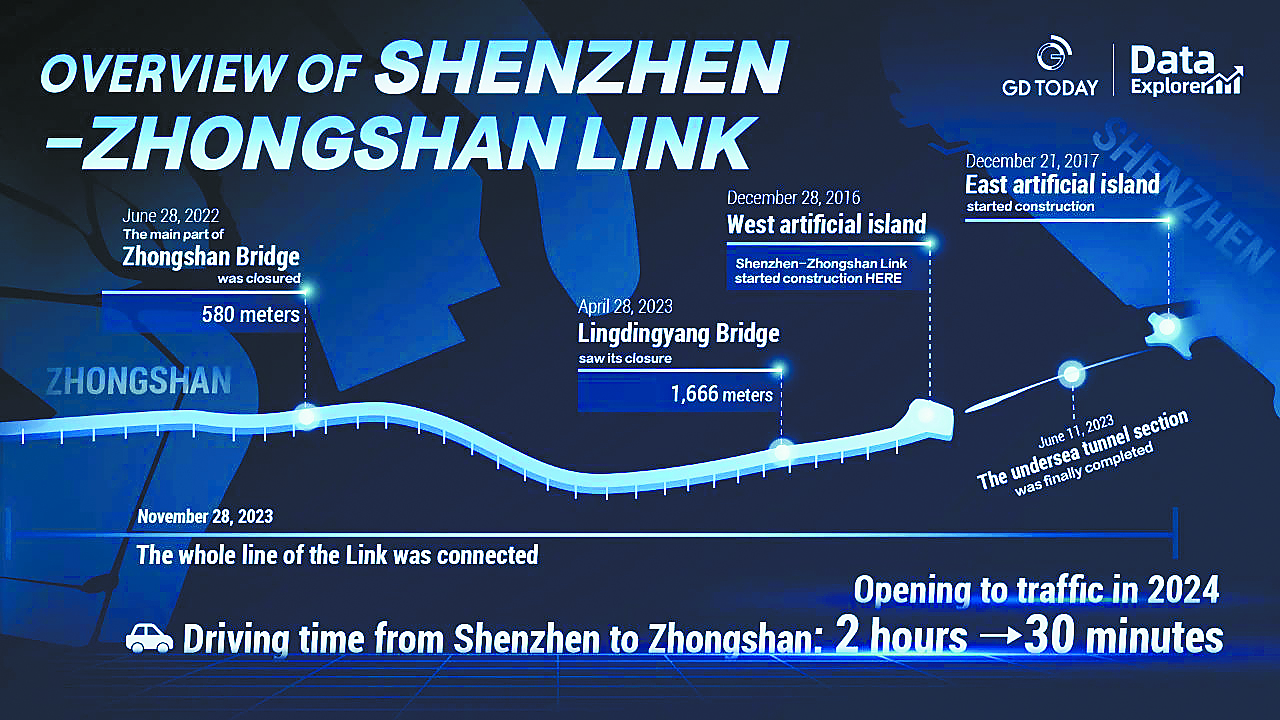Shenzhen-Zhongshan Link, an engineering feat
Writer: Han Ximin | Editor: Liu Minxia | From: Shenzhen Daily | Updated: 2023-12-06
The mainline of the Shenzhen-Zhongshan Link, a crucial infrastructure project linking the two cities across the Pearl River, has been completed recently, marking a significant step closer to its 2024 opening.
Upon completion, the 24-kilometer link is expected to cut the travel time between the two cities from the current two hours to about 30 minutes.

This aerial photo taken Nov. 28 shows the Lingdingyang Bridge of the Shenzhen-Zhongshan Link. Xinhua
The mega project includes two bridges, two artificial islands, and a two-way eight-lane sea tunnel, making it one of the world’s most challenging cross-sea cluster projects.
Spanning 6.8 kilometers long and 46 meters wide, the sea tunnel is the world’s largest and widest undersea steel shell concrete tube tunnel.
The link connects the city cluster of Shenzhen, Dongguan, and Huizhou in the eastern part of the Pearl River Delta with the cities of Zhuhai, Foshan, Zhongshan, Jiangmen, and Zhaoqing in the western part, strengthening the connectivity within the Guangdong-Hong Kong-Macao Greater Bay Area (GBA).
As one of the major engineering projects in the country’s 14th Five-Year Plan (2021-25), the project was initiated in late 2016.
Starting from the barren flatland of Ma’an Island in Zhongshan City, the project has accomplished multiple world records during its nearly seven years’ construction.
The undersea tunnel consists of 32 immersed tubes and a final joint. It is the world’s first two-way, eight-lane steel and concrete tube tunnel, and the world’s longest concrete tube tunnel. It was designed for a maximum speed of 100 kilometers per hour.

Workers pave road surface on the Lingdingyang Bridge in this undated file photo. Zhou Hongsheng
The Lingdingyang Bridge is about 91 meters high from the sea surface, with a height equivalent to a 30-story building, leaving space for the world’s biggest container ship to pass through.
The S-shaped bridge was designed to ward off drowsiness among drivers; in addition, its pillars are perpendicular to the sea flow to enable seawater to pass through efficiently.
It has two anchorages, each weighing 1 million tons. The anchorages’ bases, each about the size of 17 basketball courts, are used to counterbalance the bridge’s weight and can withstand vehicles weighing up to 100,000 tons.
From a bird’s-eye view, the west artificial island looks like a kite, with its diamond shape reducing blockage to water flow. Inside the tunnel, drivers on both directions cannot see each other because they are separated by walls. A pipe rack for telecommunication cables and pipes, electricity and firefighting was built in between the hollow walls and above the emergency exits. In cases of emergency, drivers and passengers can escape or evacuate to the other side of the tunnel.

Courtesy of GD Today
Timeline
Dec. 28, 2016
Work starts on the west artificial island, marking the start of the project.
Dec. 21, 2017
Work on the east artificial island starts.
Sept. 6, 2018
Work on Lingdingyang and Zhongshan bridges begins
Jun. 28, 2022
Two sections of the Zhongshan Bridge are joined.
Apr. 28, 2023
Two sections of the Lingdingyang Bridge are joined.
Jun. 11, 2023
Two sections of the undersea tunnel are connected.
Nov. 28, 2023
The mainline of the project is completed.